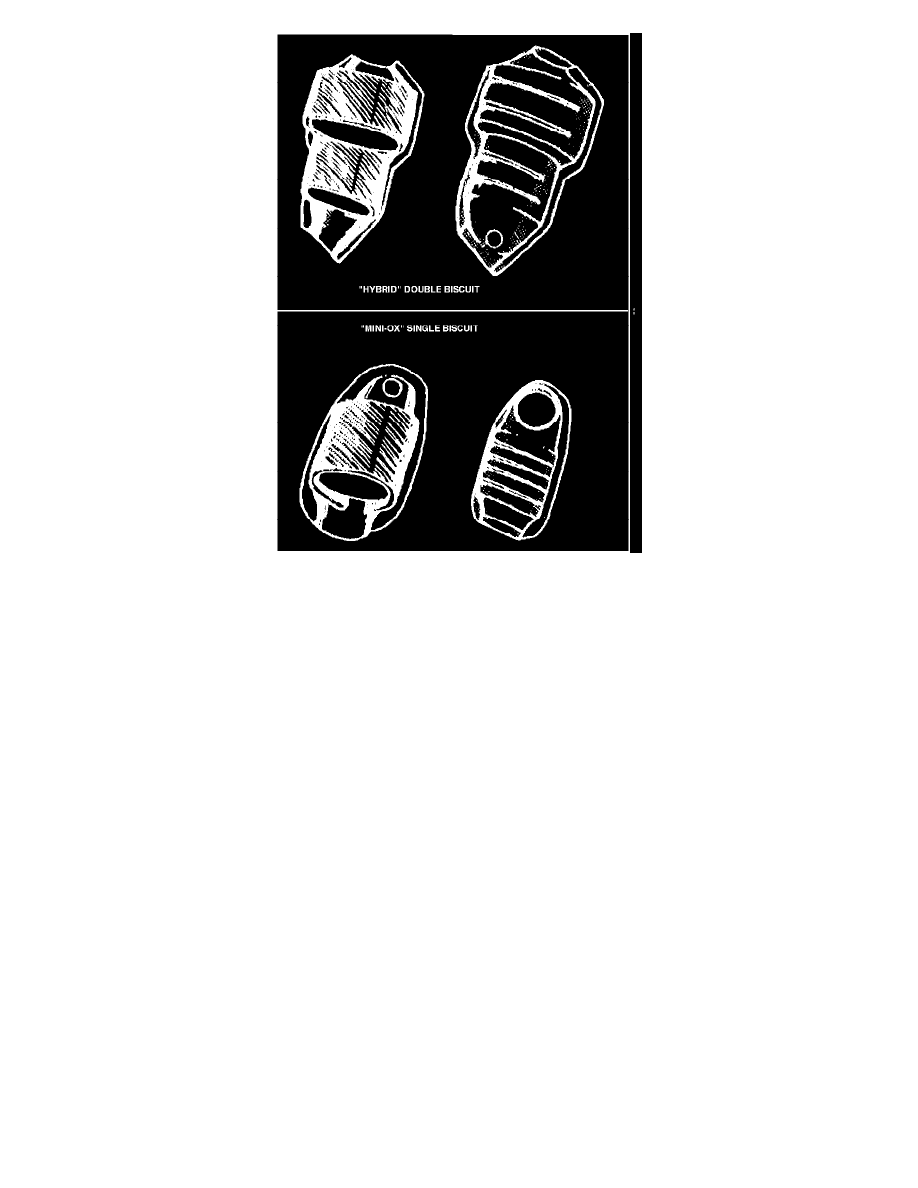Dynasty L4-153 2.5L SOHC (1988)

Fig. 9 Mini catalytic converters
The catalytic converter serves two purposes: it permits a faster chemical reaction to take place and although it enters into the chemical reaction, it
remains the same, ready to repeat the process. The catalytic converter combines hydrocarbons (HC) and carbon monoxide (CO) with oxygen to form
water (H2O) and carbon dioxide (CO2).
The catalyst is structured in the form of a honeycomb monolith, Fig. 7. The catalyst consists of a porous substrate of an inert material, coated with
platinum and other metals, the catalytically active materials. This device, located in the exhaust system between the exhaust manifold and muffler,
requires the use of heat shields, in some cases, due to its high operating temperatures.
The heat shields are necessary to protect chassis components, passenger compartment and other areas from heat related damage.
A smaller diameter fuel tank filler tube neck, Fig. 8, is incorporated to prevent the larger service station pump nozzle, used for leaded fuels, being
inserted into the filler tube, thereby preventing system contamination. Since the use of leaded fuels contaminates the catalysts, deteriorating its
effectiveness, the use of unleaded fuels is mandatory in vehicles equipped with catalytic converters. The catalytic converter can tolerate very small
amounts of leaded fuels without permanently reducing the catalyst effectiveness.
Some vehicles incorporate two mini-oxidation catalytic converters in conjunction with the main under-floor converter. Their main purpose is to initiate
exhaust gas oxidation before the gases reach the under-floor converter. The mini-ox, Fig. 9, is a single biscuit catalytic converter and is shaped so that
only one small biscuit can fit inside the can.
The ``hybrid'' converter, Fig. 9, utilizes a larger biscuit and a smaller biscuit. A Power Heat Control Valve is incorporated to increase the flow of
exhaust gases through the left-hand exhaust manifold to rapidly bring the mini-catalyst up to operating temperature.
